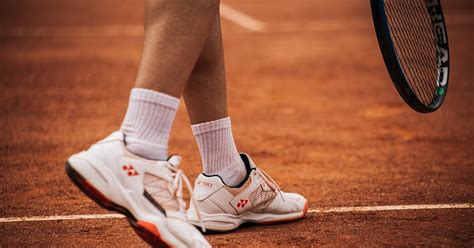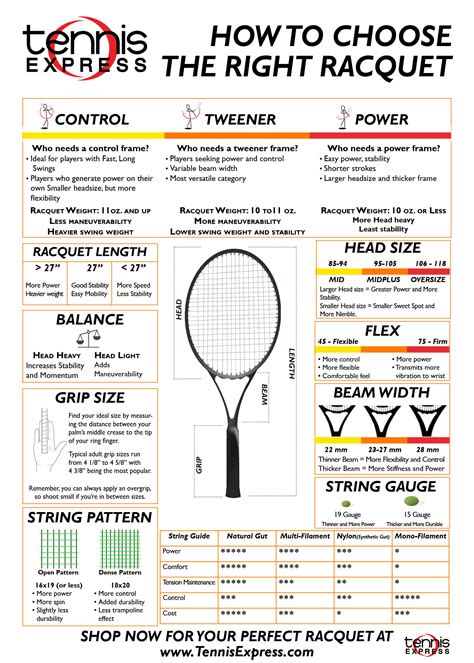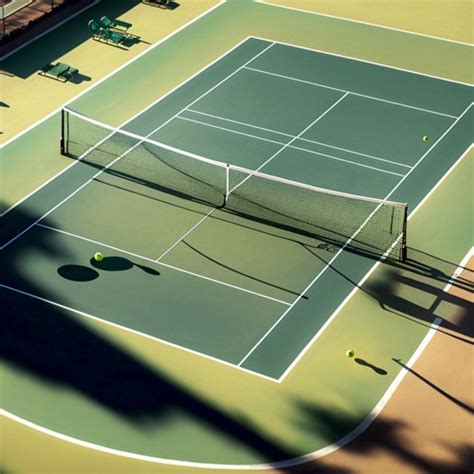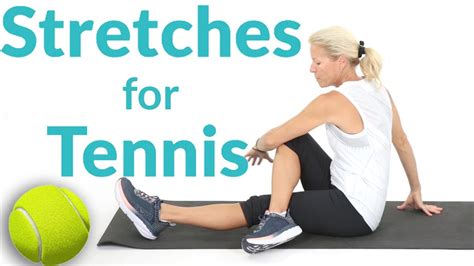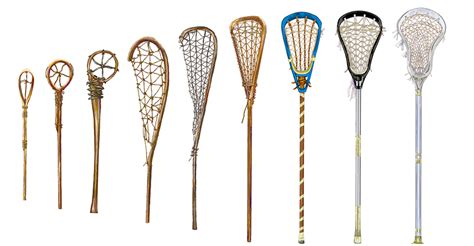Discover how to choose the right tennis shoes, understand key features, and enhance your game performance with our expert tips and guidance.When it comes to elevating your tennis game, the foundation starts with your footwear. Choosing the right tennis shoes is crucial for maximizing performance on the court, providing not only comfort but also the necessary support and stability to enhance your agility and movement. In this article, we delve into the importance of selecting the perfect pair of tennis shoes, highlighting key features to consider for optimal performance. We will explore how the fit of your shoes directly impacts your gameplay, and how different court surfaces necessitate specific shoe selections. Furthermore, we’ll share essential tips for testing tennis shoes before making a purchase and address frequently asked questions to ensure you find the best fit for your unique playing style. Equip yourself with the right knowledge, and step onto the court ready to perform at your best.
Understanding The Importance Of Choosing The Right Tennis Shoes
When it comes to maximizing your performance on the court, choosing the right tennis shoes is paramount. The relationship between your footwear and your game should not be underestimated; the right pair of tennis shoes can enhance your agility, support your movements, and ultimately influence your success in matches.
Adequate support and cushioning are essential in preventing injuries. Poorly fitting or inappropriate shoes can lead to joint pain, blisters, and other discomforts, impacting your ability to play at your best. Tennis involves a lot of lateral movement and sudden stops, so having shoes that provide stability and grip is crucial to maintain control over your movements.
Additionally, different styles and materials can cater to specific playing styles and preferences. For players who play frequently on clay courts, for instance, a shoe designed with specific traction patterns can make a significant difference. Choosing the right shoe means evaluating your playing habits and the surfaces you frequent.
The psychological aspect shouldn’t be overlooked. Wearing shoes that you feel confident and comfortable in can boost your morale and overall performance level on the court. Therefore, investing time and effort into choosing the right tennis shoes is an essential aspect of any serious tennis player’s preparation.
Key Features To Consider For Optimal Performance
When it comes to choosing the right tennis shoes, understanding the key features can significantly enhance your performance on the court. Here are several critical aspects to keep in mind:
| Feature | Description |
|---|---|
| Support | A good tennis shoe should provide ample support, particularly for the ankle, to prevent injuries during lateral movements. |
| Cushioning | Look for shoes with adequate cushioning that absorb shock and provide comfort, especially during long matches. |
| Stability | Stability is crucial for players who change directions quickly. Shoes with a solid base will help maintain balance and control. |
| Traction | Choose shoes with good grip on the court surface to enhance your footwork and prevent slipping. |
| Durability | Invest in shoes that can withstand intense wear and tear, especially if you play frequently or at a competitive level. |
Each of these features contributes to a better playing experience, helping you to maximize your skills and prevent injuries on the court. By taking the time to evaluate these aspects, you’ll be better equipped to make informed decisions when choosing the right tennis shoes for your needs.
How Shoe Fit Impacts Your Game Play
Choosing the right tennis shoes is crucial for enhancing your performance on the court, and a significant factor in this choice is the fit of the shoe. A well-fitting shoe can lead to better stability, support, and comfort, ultimately affecting your agility and speed during play.
When shoes are too tight, they can cause discomfort, hinder your movement, and even lead to injuries such as blisters or calluses. On the other hand, shoes that are too loose can result in poor control, as your foot may slide within the shoe, making it difficult to execute quick lateral movements effectively. This instability can diminish your confidence in court and negatively affect your game.
To ensure an optimal fit, it is essential to consider the following aspects:
- Length: Your toes should have enough space to move, ideally about a thumb’s width from the end of the shoe.
- Width: The shoe should comfortably hug the sides of your foot without pinching or rubbing. Look for brands that offer various width options.
- Arch Support: A proper arch fit is vital for distributing pressure throughout your foot, enhancing comfort and preventing fatigue.
- Heel Fit: The shoe should securely hold your heel in place, preventing any unnecessary movement which could lead to blisters or instability.
Taking the time to experience different models, sizes, and brands is an integral part of the choosing the right tennis shoes process. Ensure you try shoes on with the same type of socks you would wear while playing, and consider testing them by moving around the store. This hands-on approach will help identify what works best for your foot shape and playing style.
Evaluating Different Court Surfaces For Shoe Selection
Choosing the right tennis shoes is crucial, especially when considering the various types of court surfaces. Different surfaces can greatly affect your performance and your shoes’ durability. Here’s a detailed look at common court surfaces and how they influence shoe selection.
| Court Surface | Recommended Shoe Type | Characteristics |
|---|---|---|
| Hard Courts | Omni or All-Court Shoes | Durable, good traction, and cushioning needed to absorb impact. |
| Clay Courts | Clay-Court Shoes | Specialized herringbone pattern for better grip, lightweight to enhance movement. |
| Grass Courts | Grass-Court Shoes | Fewer traction points to prevent damage to the grass, lightweight for speed. |
When choosing the right tennis shoes, it’s essential to match them with the court type you’ll mostly play on:
– Hard courts provide a consistent surface but can be harsh on both shoes and joints. Look for shoes with sufficient cushioning and durability.
– Clay courts require shoes with a specific tread pattern to provide necessary traction and avoid slipping. The softer surface also allows for a bit more slide, so consider shoes that facilitate this movement without sacrificing stability.
– Grass courts require shoes that offer mobility without damaging the surface. The broader sole and less aggressive tread design are ideal for maneuvering on the softer grass.
Understanding the interplay between shoe characteristics and the court surfaces allows you to make an informed decision, ensuring you’re well-equipped for maximum performance.
Tips For Testing Tennis Shoes Before Purchase
When it comes to Choosing The right tennis shoes, trying them on properly is just as crucial as understanding their features and performance capabilities. Here are some essential tips for testing tennis shoes before you make a purchase:
- Wear Appropriate Socks: Always wear the same type of socks you intend to use during play. This ensures that the fit will be accurate and comfortable when you hit the court.
- Try Them On At The End Of The Day: Your feet tend to swell throughout the day. Trying shoes on later in the day can help you find a pair that accommodates your feet when they are at their largest.
- Walk and Jog Around: Don’t just stand there; walk and jog around the store. Pay attention to how the shoe feels during movement and if there are any pressure points.
- Test Lateral Movement: Tennis involves significant lateral movement. Make sure to perform some side-to-side shuffles in the shoes to ensure they provide the needed support and comfort.
- Check the Toe Box: Ensure there is enough space in the toe box. You should be able to wiggle your toes freely without feeling cramped.
- Assess the Arch Support: Different players have different arch types. Test how the shoe supports your arch by walking around and paying attention to any discomfort.
- Consider Your Individual Needs: If you have specific foot issues, such as pronation, ensure that the shoes you try cater to those needs. Look for shoes specifically designed for your foot condition.
By following these tips, you can ensure that the tennis shoes you choose are suited to your playing style and offer the best support for your game. Remember, Choosing The right shoe can significantly enhance your performance on the court.
Frequently Asked Questions
Why is it important to choose the right tennis shoes?
Choosing the right tennis shoes is crucial for maximizing performance on the court, as proper footwear provides necessary support, stability, and traction, helping to prevent injuries.
What features should I look for in tennis shoes?
Key features to consider include cushioning, support, the outsole type, breathability, and fit. Each element contributes to overall comfort and agility during games.
How do different court surfaces affect shoe choice?
Different court surfaces require specific shoe types; hard courts need durable outsoles, clay courts benefit from shoes with better grip and dust-resistance, while grass courts call for shoes that offer stability and traction.
Can I use running shoes for tennis?
While running shoes provide excellent cushioning, they lack the lateral support and stability required for tennis. It’s recommended to wear tennis-specific shoes for optimal performance.
What is the significance of shoe fit in tennis performance?
A proper fit ensures stability and comfort during play. Shoes that are too tight can cause blisters, while loose shoes may lead to ankle injuries. Always try shoes on with tennis socks for the best fit.
How often should I replace my tennis shoes?
Tennis shoes should generally be replaced every 6 to 12 months, or after 40 to 70 hours of play, depending on wear and tear. Signs of worn-out shoes include reduced grip, flattened cushioning, and visible damage.
Are there specific brands known for quality tennis shoes?
Yes, brands such as Nike, Adidas, Asics, and New Balance are recognized for producing high-quality tennis shoes that cater to different playing styles and court surfaces.

